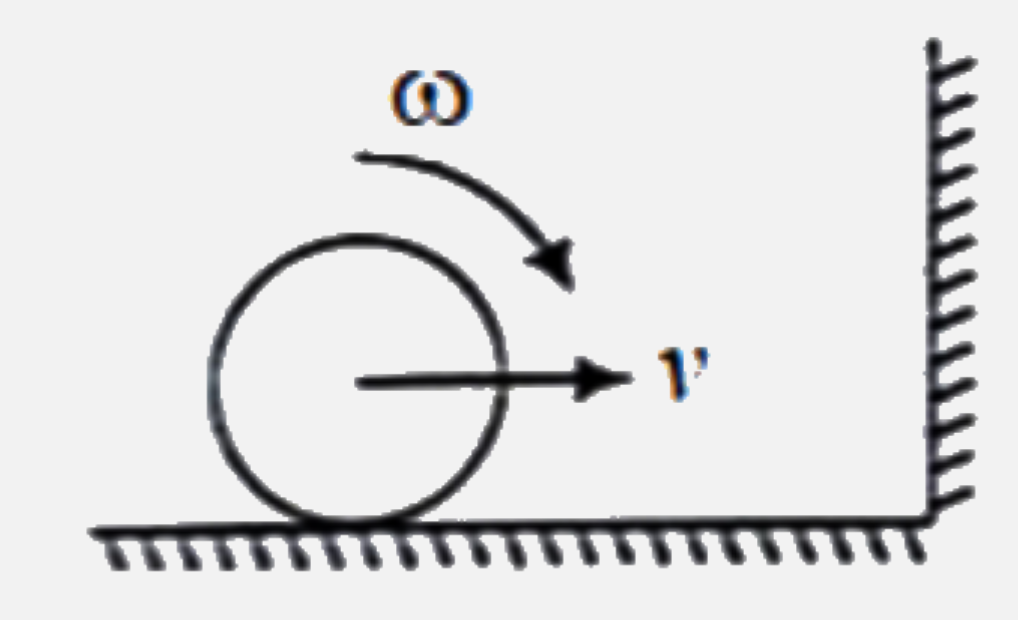A lead ball strikes a wall and falls down, a tennis ball having the same mass and velocity strikes the wall and bounces back. Check the correct statement
The momentum of the lead ball is greater than that of the tennis ball
The lead ball suffers a greater change in momentum compared with the tennis ball
The tennis ball suffers a greater change in momentum as compared with the lead ball
Both suffer an equal change in momentum
The correct Answer is:C
Change in momentum =Pf−Pi
For lead ball −ΔP=0−mv−mv
For tennis ball −ΔP=−mv−mv=−2mv
Topper's Solved these Questions
- WORK, ENERGY POWER AND COLLISIONBOOK - ERRORLESSCHAPTER - WORK, ENERGY POWER AND COLLISIONEXERCISE - NCERT BASED QUESTIONS (Perfectly Inelastic Collision)
9 Videos
- WORK, ENERGY POWER AND COLLISIONBOOK - ERRORLESSCHAPTER - WORK, ENERGY POWER AND COLLISIONEXERCISE - PAST YEARS QUESTIONS
26 Videos
- WORK, ENERGY POWER AND COLLISIONBOOK - ERRORLESSCHAPTER - WORK, ENERGY POWER AND COLLISIONEXERCISE - NCERT BASED QUESTIONS (Power)
18 Videos
- WAVES AND SOUND BOOK - ERRORLESSCHAPTER - WAVES AND SOUND EXERCISE - ASSERTION & REASON
25 Videos
Similar Questions
A ball having velocity v towards the right and having angular velocity clockwise approaches the wall. It collides elastically with wall and moves towards the left . Ground and wall are frictionless. Select the correct statement about the angular velocity of the ball after the collision .

View SolutionA 3-kg steel ball strikes a wall with a speed of 10.0ms−1 at an angle of 60.0∘ with the surfaces of the wall. The ball bounces off with the same speed and same angle. If the ball was in contact with the wall for 0.2s, find the average force exerted by the wall on the ball.

View Solution
Knowledge Check
A metalic ball strikes a wall and drops dead whereas rubber ball having the same mass and velocity bounces back. Which of the following is correct ?
AThe rubber ball suffers a greater change in momentumBMetalic ball suffers a greater change in momentumCThe momentum of the rubber ball is graeater than that of metallic ball before collisionDThe momentum of the metallic ball is greater than the rubber ball before collisionA particle of mass m moving at a velocity v strikes with the wall at an angle α with the wall and leaves ball making same angle with the wall. Choose the correct statemet (s) from the following.
AThe impulsive reaction of wall is 2mV sin αBThe impulsive reaction of wall is zeroCThe coefficient of restitution ≠1DThere is no force by particle on the wallA metal ball hits a wall and does not rebound whereas a rubber ball of the same mass on hitting the wall the same velocity rebounds back. It can be concluded that–
Ametal ball sufferes greater change in momentumBrubber ball suffers greater change in momentum.Cthe initial momentum of metal ball is greater than the initial momentum of rubber ball.Dboth suffer same change in momentum
A small lead ball is falling freely in a viscous liquid The velocity of the ball
View SolutionA lead ball and rubber ball having same mass, strike normally on a smooth vertical wall with the same velocity. The lead ball falls down after striking but the rubber ball bounces back. Then
View SolutionA ball of mass 0.5kg moving with a velocity of 2m/s strikes a wall normally and bounces back with the same speed . If the time of contact between the ball and the wall is 1 millisecond , the average force exerted by the wall on the ball is
View SolutionA metal ball and a rubber ball , both having the same mass , strike a wall normally with the same velocity. The rubber ball rebounds and the metal ball does not rebound. It can be concluded that
View SolutionA ball of mass 500 gram strikes a wall with a velocity of 80 m/s and rebounds with the same velocity. If the tme of contact is 1/30 sec, then the force exerted by the ball on the wall is
View Solution
